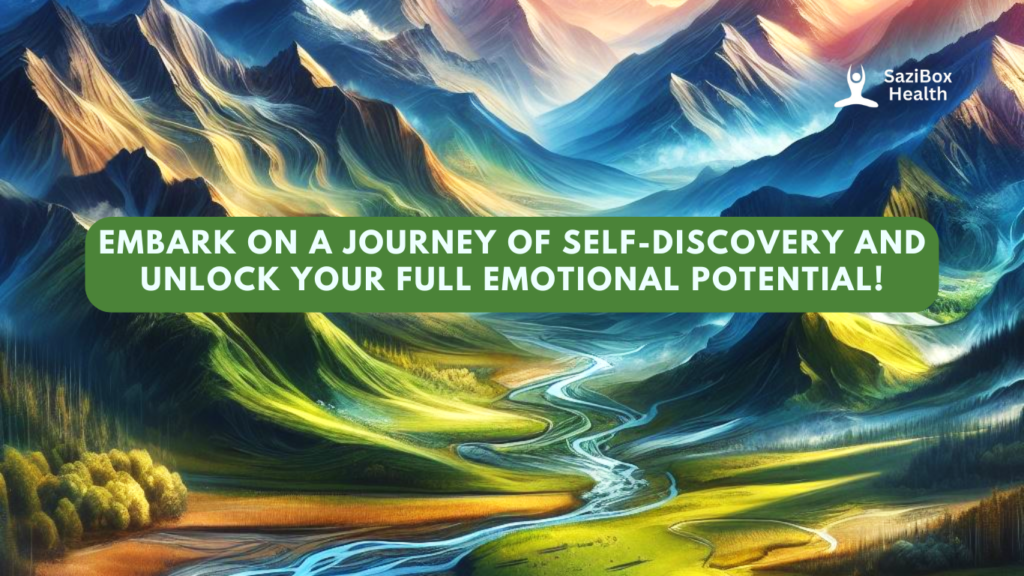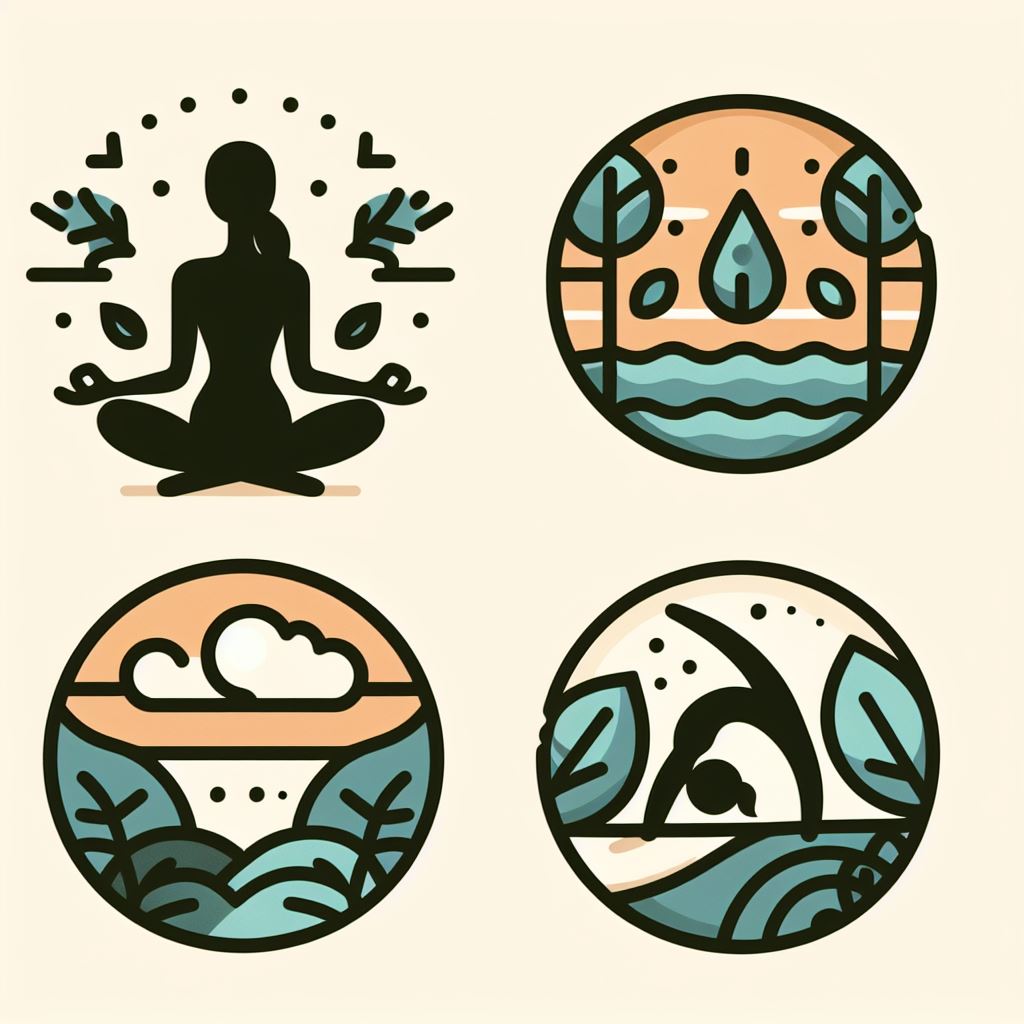
Welcome to SaziBox Health’s first guide in our emotional well-being series! This isn’t your typical dry article filled with jargon. We’ll embark on an interactive journey of self-discovery, exploring the landscape of your emotional world and equipping you with tools to unlock your full potential.
Part 1: The Emotional Terrain
Imagine your emotions as a vast landscape. Mountains represent moments of joy and excitement, valleys symbolize sadness and disappointment. Rivers flow with anger and fear, while peaceful meadows reflect contentment.

Activity: Grab a pen and paper. Sketch your own emotional landscape. Are certain emotions more prominent? Are there areas you want to explore further?
Understanding the Importance of Emotional Wellbeing
Just like a healthy physical environment sustains life, a balanced emotional state is crucial for well-being. Our emotions influence our thoughts, behaviours, and overall health. By nurturing emotional well-being, we can:
- Improve physical health: Studies show chronic stress and negative emotions can weaken the immune system and increase the risk of various diseases. (Reference 1: https://www.ncbi.nlm.nih.gov/pmc/articles/PMC4465119/)
- Enhance relationships: When we manage emotions effectively, we can build stronger, healthier connections with others.
- Boost productivity: Emotional balance allows us to focus, make sound decisions, and navigate challenges more effectively.
Part 2: Exploring Your Emotional Compass
Now, let’s identify your “emotional compass,” the tools you use to navigate your emotional landscape.
Activity: Answer these questions honestly:
- How aware are you of your emotions?
- How do you typically express your emotions?
- What are your healthy coping mechanisms for dealing with difficult emotions?
Common Challenges and Solutions:
- Identifying Emotions: Many people struggle to label their emotions. Mindfulness practices like meditation can improve emotional awareness. (Reference 2: https://greatergood.berkeley.edu/topic/mindfulness)

- Unhealthy Coping Mechanisms: Some resort to unhealthy coping mechanisms like substance abuse or social isolation. Exploring healthier alternatives like exercise or journaling is crucial.
Part 3: Building Your Emotional Toolkit
The good news? You can build a robust emotional toolkit. Here are a few essential tools:

- Self-Compassion: Treat yourself with kindness and understanding, even during challenging times. (Reference 3: https://self-compassion.org/)
- Positive Self-Talk: Challenge negative thoughts and replace them with affirmations that empower you.
- Stress Management: Techniques like deep breathing exercises, yoga, or spending time in nature can effectively manage stress. (Reference 4: https://www.goodrx.com/health-topic/mental-health/treating-mental-illness-early)

- Gratitude: Focusing on what you’re grateful for can shift your perspective and enhance emotional well-being. Consider keeping a gratitude journal, where you write down a few things you’re thankful for each day. In Europe, expressing gratitude through acts of service for others is also a common practice.
Activity: Choose one tool you want to explore further. What resources can you utilize to implement this tool in your daily life?
Remember:
- Emotional well-being is a journey, not a destination. There will be ups and downs, and that’s okay.
- Seek support when needed. Don’t hesitate to reach out to a therapist or counsellor if you’re struggling.
- Celebrate your progress! Acknowledge your efforts and the positive changes you’re making.
Bonus: Interactive Resources
- Mood Tracker Apps (US & Europe): Track your emotions and identify patterns (e.g., Daylio, Moodfit)
- Guided Meditations (US & Europe): Explore apps like Calm, Headspace, or Insight Timer to learn mindfulness techniques.
- Online Support Groups: Connect with others who share similar challenges (Look for groups specific to your region).
This interactive guide serves as a starting point. SaziBox Health is committed to providing ongoing resources and support to help you unlock your full emotional potential. Stay tuned for future articles in our emotional well-being series, exploring specific topics in greater depth.
Visit our website today to explore more articles and resources on emotional well-being: https://saziboxfam.com/
Subscribe to our newsletter to receive updates on new articles in the emotional well-being series: Subscribe our newsletter
Share this article with your friends and family who might benefit from this interactive guide!



